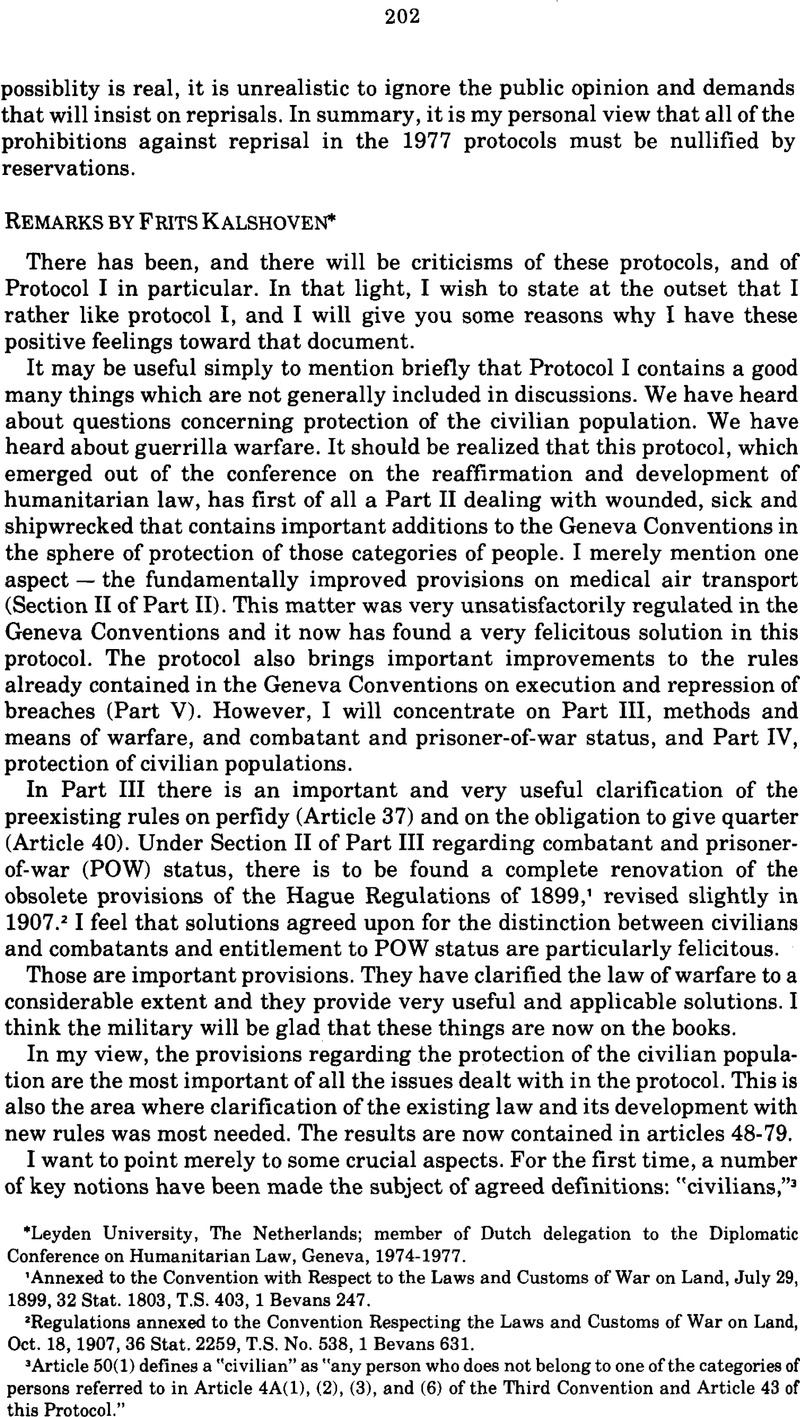No CrossRef data available.
Article contents
Remarks by Frits Kalshoven
Published online by Cambridge University Press: 28 February 2017
Abstract

- Type
- Protocols Additional to the Geneva Conventions on the Laws of War
- Information
- Copyright
- Copyright © American Society of International Law 1980
References
1 Annexed to the Convention with Respect to the Laws and Customs of War on Land, July 29, 1899, 32 Stat. 1803, T.S. 403, 1 Bevans 247.
2 Regulations annexed to the Convention Respecting the Laws and Customs of War on Land, Oct. 18,1907, 36 Stat. 2259, T.S. No. 538, 1 Bevans 631.
3 Article 50(1) defines a “civilian” as “any person who does not belong to one of the categories of persons referred to in Article 4A(1), (2), (3), and (6) of the Third Convention and Article 43 of this Protocol.”
4 Article 52(1) defines “civilian objects” as “all objects which are not military objectives.”
5 Article 52(2) defines “military objectives” insofar as objects are concerned as “those objects which by their nature, location, purpose or use make an effective contribution to military action and whose total or partial destruction, capture or neutralization, in the circumstances ruling at the time, offers a definite military advantage.” Members of the armed forces are defined in Article 43.
6 Article 50(1) provides: “In case of doubt whether a person is a civilian, that person shall be considered to be a civilian.”
7 Article 52(3).
8 For example, the statements of understanding on signature of the United States (“that the rules established by this Protocol [I] were not intended to have any effect on and do not regulate or prohibit the use of nuclear weapons”) and the United Kingdom (“the new rules introduced by the Protocol [I] are not intended to have any effect on and do not regulate or prohibit the use of nuclear weapons”) reprinted in Department of the Army Pamphlet 27-1-1, Protocols to the Geneva Conventions of 12 August 1949, 138, 141, (1979).
9 The de Martens clause is found in the Preambles to the Hague conventions on Land Warfare of 1899 and 1907. The 1899 version reads: “Until a more complete code of the laws of war is issued, the High Contracting Parties think it right to declare that in cases not included in the Regulations adopted by them, populations and belligerents remain under the protection and empire of the principles of international law, as they result from the usages established between civilized nations, from the laws of humanity, and the requirements of the public conscience.” A revised version has been included in Article 1(2) of Protocol I: “In cases not covered by this Protocol or by other international agreements, civilians and combatants remain under the protection and authority of the principles of international law derived from established custom, from the principles of humanity and from the dictates of the public conscience.”


